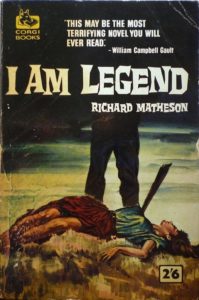A unifying characteristic of any great horror story is the isolation of the characters. And if you take a minute to think about some of the scariest novels or movies ever produced, this rings true. Some of these stories portray characters in physically remote locations while others are mentally or socially isolated. Either way they are solitary when it comes to facing whatever horror pursues them, which seems to be at the center of humankind’s true fear: being alone. And being removed for too long from accustomed norms and interaction with other people doesn’t only provide the perfect setting for disquiet and anxiety over things that go bump in the night. Isolation can also erode the very thing that makes us human in the first place.
In my new sci-fi/psychological suspense novel, I wanted to create a situation where my main character was dealing not only with physical isolation but also a mental seclusion involving addiction. I chose space for the novel’s setting, because being alone is one of the most terrifying aspects of the human condition. The majority of us thrive on another’s presence. We form bonds and take comfort in knowing someone else and holding them close. It gives us a sense of unity and support that most times we cannot provide for ourselves.
Here are 9 psychological thrillers that use isolation to intensify a sense of unease and to underscore the twisted perceptions of characters.

The Shining, by Stephen King
One of the scariest and most well known haunted house stories in existence. King pulled out all the stops with this one. Secluded and empty hotel filled with violent history? Check. Family trying to recover from a father’s addiction and abusive behavior? Check. Son with the uncanny ability to see the hidden evil around them? Double check.

John Carpenter’s The Thing
Probably my favorite monster movie of all time. Cut off from the rest of the world at a remote research station in the Antarctic, a group of men are beset upon by an alien presence able to mimic its prey perfectly. If there’s a better situation or setting for paranoia and panic to take hold, I can’t think of it.

“The Fall of the House of Usher,” by Edgar Allen Poe
A classic tale of madness by one of the masters. Roderick Usher, along with his sister Madeline, are both afflicted by a mysterious malady described by the narrator who answers a letter written by Roderick asking for help. The house of Usher is remote and fractured, mirroring the remaining two inhabitants, and over the course of the story the sense of dread is ratcheted up until it thrums like an ill-tuned guitar string. The oldest story on this list, it is by no means diminished by its age. If anything the sense of isolation brought on by the psychosis of the characters is made more potent by the (wrongly) continued stigma associated with mental health today.

Alien, directed by Ridley Scott
Stranded on Planet LV-426, the crew of the damaged spacecraft, Nostromo, makes an incredible find—the remains of an alien ship with an…occupant still aboard. Again I’m struck with how well the isolation of space is used in this film, forcing the survivors band together and fight for their lives against something they don’t fully understand.
The Terror, by Dan Simmons
Based on the disappearance of The Erebus and The Terror, two British Royal Navy ships whose crews were searching for the Northwest Passage in 1845. This novel is thoroughly researched and exceedingly claustrophobic even though it’s set in the wide expanses of the arctic sea. As you read you can feel the tension and paranoia poisoning the men who are trapped in the frozen ships while something unseen and inhuman stalks them across the wintry desert.

I Am Legend, by Richard Matheson
Robert Neville is the last man on earth. It doesn’t get any more isolated than that. Everyone else has been infected with a virus and either died, or become creatures inhabiting the dark that hunt Neville even as he tries to extinguish them. The utter loneliness of the main character is what bleeds through so powerfully in this story which spawned four movie adaptations and was an inspiration for Night of the Living Dead.
Pines, by Blake Crouch
Secret Service agent Ethan Burke just woke up missing parts of his memory in Wayward Pines, Idaho—a sleepy and isolated little mountain town where everyone’s polite and no one wants to talk about their pasts. With few allies and a creeping sense there’s something very, very wrong with the perfect town, Burke realizes he can’t, or isn’t allowed, to leave. This novel features one of the most memorable and twisty endings I can remember in literature.

The Woman in Cabin Ten, by Ruth Ware
Ruth Ware has become one of my favorite authors. She has such a knack for setting and damaged characters, and in her sophomore novel she takes that talent to the next level. Lo Blacklock is a travel journalist recovering from a recent and traumatic breaking and entering. She accepts an invitation for a luxury cruise in the Norwegian fjords, and after witnessing a disturbing event, realizes she can’t trust any of her fellow passengers. Lo is beyond alone as the cruise goes from bad to worse, and trapped onboard a ship miles from land and help, there is no one to rely on but herself to survive the trip.
The Road, by Cormac McCarthy
My favorite novel of all time—an unnamed ‘man’ and ‘boy’ are the main characters in this post-apocalyptic novel left to wander a burnt and apathetic landscape filled with emptiness and human monsters. Not only is this a master class in the power of subtle prose, it also explores hope for the future in a futureless world.




















